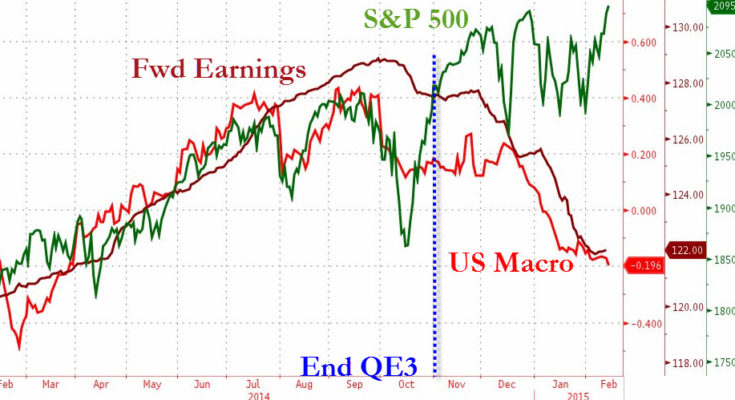Maybe the pervasive “this time is always different†meme has been perpetuated to the point that the market actually believes it, or maybe it’s just old fashioned greed, but whatever the case, market participants (and this means central banks, retail investors, and everyone in between) have an extraordinary inclination towards Einsteinian insanity.
Never mind, for instance, that the Fed’s attempts to “smooth out the business cycle†(breaking it in the process) have everywhere and always served only to create bigger and bigger bubbles that have led, invariably, to crashes that are ever more spectacular/devastating – what we need is more intervention by central planners bankers. Forget the fact that throughout the course of human history, minting endless amounts of fiat currency always fails – in the words of new BOJ board member Yutaka Harada, “we just need to print more money.â€
And certainly pay no attention (despite the tendency for these types of discrepancies to self-correct) to the divergence between the S&P and trivial things like the U.S. macro picture and/or forward earnings estimates…Â

… the U.S. economy is the cleanest dirty shirt and Jeremy Siegel is probably contemplating Dow 40K as we speak, so just hold your nose and buy.
Given this steadfast refusal to learn from yesterday’s mistakes, it isn’t any wonder that when Citi recently surveyed 43 banks, 29 asset managers, and 31 hedge funds regarding their outlook for the credit derivatives market in 2015, the consensus was that “there seems to be plenty of room and enthusiasm to use derivatives to take leveraged risk.” Phew: for a minute there it looked like leveraged risk taking with derivatives might go the way of the Dodo in the post-crisis world, making Bruno Iksil the last great example of how much fun one can have stomping around in off-the-run CDS indices with depositors’ money.
It’s also comforting to know that among those Citi surveyed, the general consensus was that

